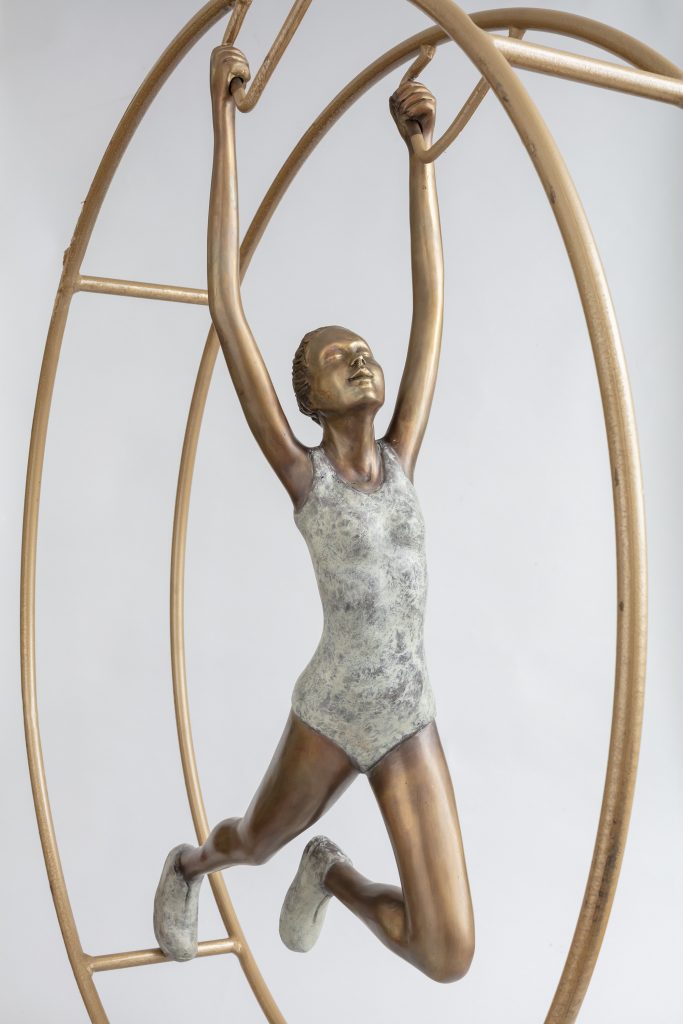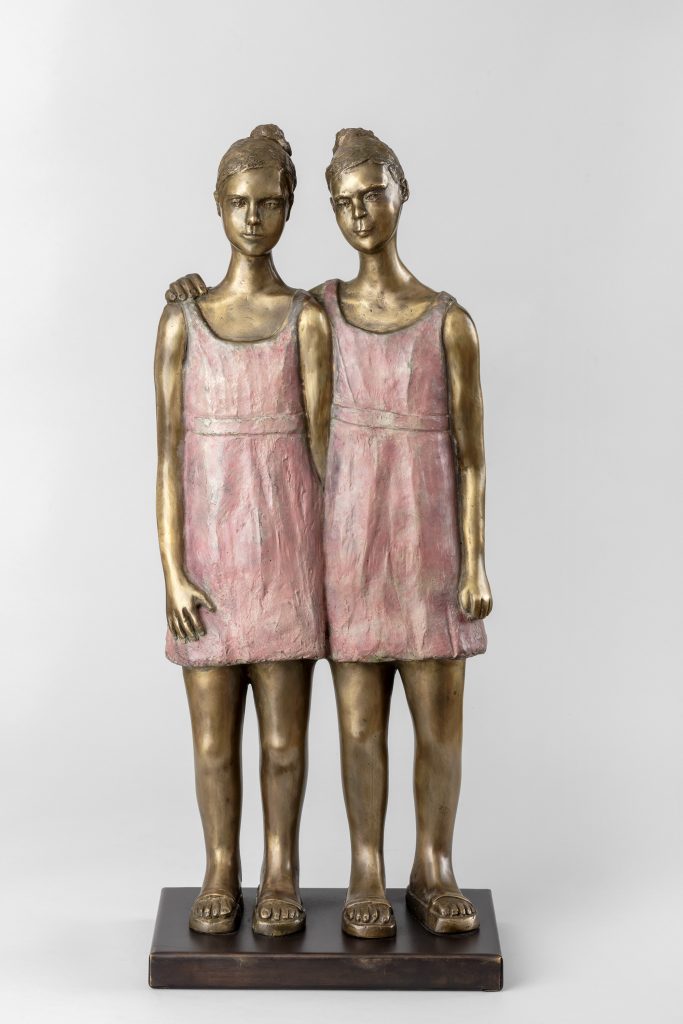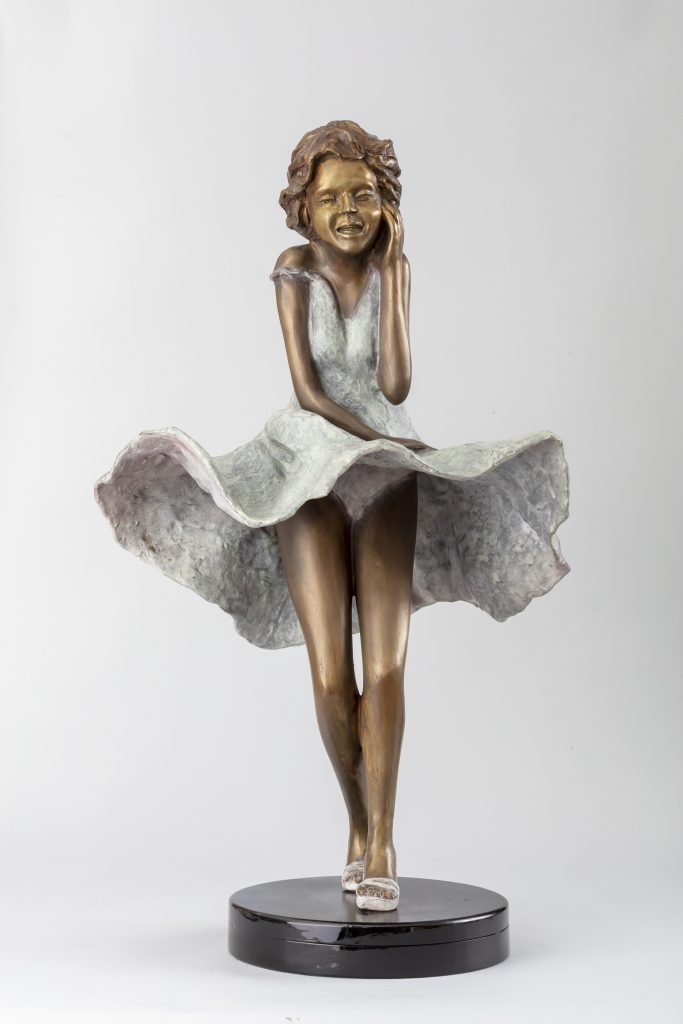Edna Benes’ sculptures of young women and girls are visually pretty, but exude an asexual coolness that I find off putting

Makers of the popular doll series “Barbie” were famously accused of hypersexualizing her body; they lengthened her legs, gave her a preternaturally narrow waist, and endowed her with a large bust. In other words, they manipulated the natural proportions of the human female form to make them more sexually appealing to men, which is perhaps a strange thing to do since the target market for Barbie dolls are prepubescent girls.
Since Mattel, the toy makers who came up with Barbie, were intimately familiar with their customers, we can hardly accuse them of making careless choices. They hypersexualized Barbie because they knew that young girls would choose her over other dolls precisely because they instinctively knew that attaining such a form, though perhaps an impossible goal, would make them more attractive to men and thus more successful in finding a suitable mate.

Mattel are hardly alone in manipulating natural female proportions to accentuate female sexuality. In fact, this has been done since the dawn of mankind. The so-called “Venus” statuettes of fertility goddesses date back to extreme antiquity. Their protruding bellies and large saggy breasts accentuated the childbearing and child-rearing attributes of the female form at a time when adequate nutrition was far from guaranteed.
The Greeks and Romans of the classical period created female nudes that were subtly yet unmistakably enhanced, as did their imitators in the European renaissance. Avanguard and abstract painters like Pablo Picasso followed suit in deconstructing the female form and putting it back together in a way that accentuated the sexually desirable, unmistakably making it the essence of what being a woman was all about.

Israeli sculptor Edna Benes, seems to do quite the opposite. Her bronzes of girls and women seem to distort the female form just as her predecessors had done, but to the opposite effect. Her females are, to me, disturbingly off putting in the sexual context. This is all the more dissonant because these women wear what could be described as “sexy” clothing, leotards and summer dresses and yet they evoke the opposite of a sexual response exuding a strange self-absorbed coolness.
Even Edna’s take on the most famous sex-symbol of all time, Marilyn Monroe, in her sexiest pose with the hem of her dress flying up in the New York subway updraft, is sexually deterring rather than inviting. It’s all there, ostensibly, the long legs, the slippers, the panties well-visible with the hemline blown sky high. But as our gaze moves upward, we see the hunched shoulders, the skinny arms, and most of all the facial expression.

Marilyn PRETENDED to be embarrassed by her “wardrobe malfunction”. Her facial expression was one of “oops, I did it again”, rather than “Oh my god, I’m so ashamed and distressed I could cry” and yet this is precisely the expression on Edna’s Marilyn’s face. Edna’s Marilyn is truly horrified and horrified women are not sexy.
Perhaps Edna’s sculptures are a reflection of our times, of the new age in the feminist movement that seeks to desxualize women, to unmake them as objects of masculine sexual desire. If that were her design, she had most certainly succeeded, but I for one find that taking sexual radiance out of the female form makes it quite simply ugly, and that is a disservice to all women.
Edna’s art is on exhibit at the Office in Tel-Aviv Gallery on 6 Zamenhoff Street starting at 11:30 this Friday, December 6, 2019.


